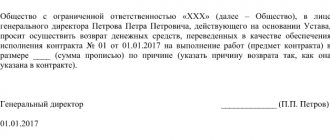The document flow of each country has its own specifics, and Russia is no exception. Documents for importing goods must be prepared in accordance with the regulations, otherwise there will be problems with customs clearance and payment for the goods - you simply will not be able to do this. You should be prepared to fill out most of the documents in person.
To successfully complete this work you will need: knowledge of the Laws of the Russian Federation and consultations with specialists (for example, a customs broker). What documents are required to carry out import deliveries? What is the content of these documents and what additional information may be required to be submitted to government agencies? This is exactly what will be discussed in our article.
Concept and meaning
As part of the definition of this concept, it is worth noting that customs documents are the papers required to formalize the movement of goods across the border. In modern society, these tools are all provided for by the legislation of the Russian Federation, regulations, and, in addition, the Customs Code. Their meaning is as follows:
- Movement of goods across borders.
- Application of a certain customs regime.
- Production control and registration.
- Collection of payments.
- Other customs and statistical purposes.
Types and list
So, these papers are necessary to carry out control. The entire list of customs documents can be classified according to the following categories:
- Transportation. In this case, we are talking about a bill of lading, invoice or other documents confirming the existence and content of an agreement for the carriage of goods, and accompanying products, as well as vehicles within the framework of international transport.
- Commercial documentation. Invoices are expected along with shipping and packing slips and other papers used in accordance with international standards, as well as national legislation. They are also used according to business customs in order to confirm the implementation of transactions that involve the movement of supplies across the customs border. Documents of the Customs Union should be included in this category of papers.
- Papers that are prepared by the service exclusively for customs purposes.
- Other documents.
Next, we will consider in detail the most common types of customs documents.
What documents are required to import goods?
In order to be able to import goods into the territory of the Russian Federation, go through customs and certify the cargo, you need documents for importing goods, the list of which is individual and depends on what kind of cargo it is and what type of business corresponds to your activity. Below is a list of documents that make up the main package - this will help you navigate the preparation of all documentation.
1.
Agreement.
An agreement on foreign trade must be concluded between the interacting parties. The text of the document must be prepared in Russian and English, indicating the “main” language, understandable to both parties to the contract. The main language will help to avoid misunderstandings that may arise from different readings. The same applies to additional agreements.
The contract must indicate:
- subject of the contract;
- the cost of the cargo and the total amount of the contract;
- terms and conditions of delivery according to INCOTERMS 2010;
- conditions for delivery and acceptance of cargo;
- information about actions with cargo (packaging, labeling);
- liability of the parties to the contract;
- force majeure situations;
- procedure for action in the event of a conflict;
- duration of the contract;
- details of the parties (legal addresses and bank details).
Documents for importing goods may include additional agreements that specify:
- description and quantity of cargo;
- price per product unit;
- the cost of the entire cargo;
- procedure for payment for cargo;
- production timeframes.
Based on the agreement, a transaction passport is drawn up.
1.
Passport.
Each fact of import is confirmed by a document that must be obtained from the serviced bank. It is called a transaction passport and contains information about the parties to the agreement carrying out foreign trade operations, about banks and about the agreement (contract) itself.
- details of the party representing Russia: name, date of state registration of the company;
- INN, OGRN, KPP, bank account through which payment for the contract will pass;
- details of the party representing the foreign partner (information similar to that described above);
- details of the bank where the transaction passport is issued (serving bank);
- information about the contract: date of conclusion, number, amount and currency of payment, expiration date of the contract and its special conditions.
2.
Invoice.
Documents for importing goods must contain an invoice - a payment document containing all information about the transaction and identification features that are presented in relation to all official financial securities. It is drawn up on a form provided by the manufacturer of the product and signed by both parties to the agreement (contract). The invoice states:
- type of payment document (commercial/proforma);
- date and number of compilation;
- information about the parties to the contract and the recipient of the cargo;
- date of conclusion of the contract and its number;
- delivery terms according to INCOTERMS 2010;
- description of all types of cargo separately, their cost and quantity;
- total cost of cargo (in US dollars);
- total weight of cargo;
- purpose of delivery;
- surname of the responsible person and his signature, seal.
The document is prepared independently in two languages (Russian and English). To avoid any difficulties with customs services, the invoice must contain the same information as in the contract
3.
Bill of lading.
A bill of lading is required to confirm acceptance of cargo for transportation by sea. In addition, it confirms the conclusion of an agreement on cargo transportation by sea and the acceptance by the carrier of obligations regarding the delivery of the cargo to the port of destination of its issuance to the owner of the bill of lading, that is, the legal recipient.
Documents for importing goods by sea must indicate:
- name of the vessel (if the cargo is delivered on a specific vessel);
- information about the carrier (name, location);
- information about the sender and recipient;
- name of the port of shipment;
- the date when the carrier accepted the cargo at the port of shipment;
- name of the cargo unloading port;
- cargo characteristics;
- description of the appearance of the cargo and packaging method;
- the cost of freight paid by the recipient (or other indication of the need for freight to be paid by the recipient);
- date and time when the bill of lading is issued;
- signature of the person responsible for the transportation (captain or authorized representative of the company).
The bill of lading must be drawn up in several copies. All these documents for importing goods are considered originals. If the cargo is issued according to one of them, then the rest are deprived of legal force.
4.
Certificate of origin of the goods.
This document serves as confirmation of the country that manufactured the transported products. Certificate of origin of cargo is a document that is not mandatory for processing documents at customs. However, when going through customs clearance with a certificate, you can receive certain benefits if you import goods to which they apply.
5.
Railway bill of lading.
If cargo is transported by rail, then a railway waybill must be issued. The document stipulates the obligations of the customer and the carrier (the parties to the contract are indicated as the customer: sender/recipient). The invoice is kept by the carrier throughout the journey, and after receiving the goods, the document is transferred to the second party to the contract.
- The railway bill of lading indicates:
- point of departure and destination of the cargo;
- information about the parties to the contract;
- information about the cargo (name, characteristics, cost, etc.);
- delivery date.
A railway waybill is a document confirming the existence of contractual obligations between the parties and their implementation.
Read the article: Share of imported products on the Russian market
Declaration and tariff
The cargo declaration is the main customs document. It is unified and performs several functions at once. One of them is declaration, that is, the communication to the institution by participants in foreign trade activities of all important information about property and about foreign trade transactions that are carried out with foreign counterparties. Without its provision by customs state control authorities, goods will not be accepted for clearance across the border.
What is customs tariff? In this case, we are talking about a systematic list of duties that are levied on cargo owners as part of the passage of products across the state border.
Import and export licenses
These categories are documents issued by state special services in the event of import and export in the country, as well as control over the export and import of goods. These papers are provided on the basis of an application from the relevant exporters or importers submitted to the authority that is responsible for issuing licenses directly in their country. They are drawn up on a special form, which consists of two parts: the application itself and the permit. It is submitted within a certain period before the expected shipment or receipt of products. The second part of the document is stamped by the issuing organization.
The content of such a customs document presupposes the availability of information about the name of the applicant, the manufacturer, seller and buyer of the goods, the type of license, the number of the permit to issue it, and the validity period of the permit. In addition, it is important to indicate the nature of the transaction along with the currency of payment, the name and full characteristics of the goods, and the name of the country where the goods are exported or imported. Additionally, data is entered on the price of each item, the period of readiness for shipment and arrival, and, in addition, the name of the authority that issued the document. It is provided for a certain period, after which it becomes invalid.
An export license is a document containing permission to export the goods listed in it for a certain time. An application for issuance of relevant documentation is a claim for obtaining permission to export specific goods of a certain value to specified destinations.
An application for an import license is a document in which interested parties ask the competent authorities to allow the import of goods, it describes in detail the type of product, its origin and cost, etc. An import license is a customs document issued by the competent authority in accordance with the rules in force, whereby the named party is granted permission to import a limited or unlimited number of such goods over a specified period of time under the specified conditions in the document.
Certificate of supporting documents
Regarding the submission of the certificate in question, it should be borne in mind that:
- The certificate is sent to the bank in the situations listed in clause 8.1 of instruction No. 181-I (for example, upon execution, termination of obligations, change in the amount under the contract).
- There is no provision for drawing up a certificate (as, by the way, the supporting documents themselves) for contracts for rent, leasing, communication services, insurance, if such contracts provide for periodic payments (clause 8.5 of instruction No. 181-I).
- The deadline for submitting a certificate (as well as supporting documents) depends on the moment of the business transaction, its content and the specifics of documentary support within the framework of a foreign exchange transaction.
The corresponding deadlines are specified in paragraphs. 2.2, 2.5, 2.10, 2.22, 2.24, 10.13 and 14.4 of instructions No. 181-I). So, for example, a certificate and supporting documents must be submitted to the bank within 15 days following the month in which the stamp on the date of export of goods from the Russian Federation was received, if the corresponding export was carried out during the customs clearance procedure.
Currency control in 2021 is carried out in relation to both citizens and legal entities. Read more about its specifics here.
You can get acquainted with the practical features of filling out a certificate of supporting documents in a special material from ConsultantPlus experts. Get a free trial now.
Declaration of foreign exchange control for export and import
When exporting, such a paper is a document that is filled out by the exporter-seller, with its help the competent authority is able to control the transfer into the country in foreign currency of the amount received as a result of trade transactions, in accordance with the payment terms and applicable exchange control regulations.
When importing, the declaration is filled out by importers-buyers, who are the controlling party in the implementation of trade transactions for which foreign currency is allocated, and money is transferred in accordance with the terms of payment and the current exchange control rules.
Capricious contractor
Sometimes Russian companies organize or order the production of various types of products outside the Russian Federation. This approach can be explained by the lack of qualified personnel or certain production capacities in our country; in addition, quite often it is economically beneficial for enterprises.
For example, it is not often that companies print periodicals, albums or gift books within Russia. As a rule, the publishing house, having received such an order, develops the original layout of the product, edits it and carries out pre-press preparation, and prints it in some printing house in Finland or Eastern European countries.
In current conditions, when competition in the market has become significantly more intense, entrepreneurs ordering such products are often forced to change contractors or make decisions on changing the delivery address in a short time. Note that such inconstancy of clients creates certain difficulties for sellers. First of all, this concerns the formalization of such contractual relations and the competent organization of accounting for such transactions.
Let's consider a situation where a domestic partner has decided to supply part of the goods produced abroad not to the territory of Russia, but beyond its borders, to a foreign country.
Currency license and cargo declaration
This is a document issued by a competent authority authorizing the importer-buyer to transfer a certain amount to the exporter-seller in foreign currency in payment for the product.
A cargo declaration is sometimes called a freight declaration. This is a general term that refers to documents that contain the necessary data for customs regarding cargo transported by commercial means of transport. This customs transport document is drawn up according to the model adopted by the Convention for Facilitation of International Maritime Shipping as a basic document that contains information on products required by government authorities as part of the arrival or departure of the ship.
Certificate of examination of commodity origin
This paper is issued by the competent authority (usually the commodity examination department of the Chamber of Commerce and Industry) at the request of the manufacturer. It contains information about the origin of components and raw materials, the number and date of the contract for the supply of these products. Among other things, it lists the main process operations that were performed at the enterprise. In their conclusion, the experts testify that the product actually originates from this country. Based on the relevant examination report, a certificate of origin is issued.
Projection in accounting policies
In a situation where Seller LLC imports part of the goods purchased abroad, but not part, the operation for the sale of a consignment of goods sent to Germany (or any other country except the Russian Federation) is not subject to VAT. Thus, the company will carry out transactions that are subject to and not subject to this tax. In this case, the accountant of Seller LLC is recommended to include the following provisions in the accounting policy for tax purposes.
1. Based on Art. Art. 149, 153 and 166 of the Tax Code of the Russian Federation, separate VAT accounting for transactions taxed at rates of 10 and 18 percent, as well as for transactions exempt from tax, is maintained in the accounting and tax accounting registers.
2. For goods (works, services, property rights) used in both taxable and non-VAT-taxable transactions, the amount of the deduction is determined in proportion to the cost of goods shipped during the reporting quarter and subject to VAT, in the total cost of these goods.
3. Even if the share of total costs for the production of goods (works, services, property rights), transactions for the sale of which are not subject to VAT, does not exceed 5 percent of the total total costs of production, the “input” tax is divided into accepted and non-accepted for deduction.
4. Based on Art. Art. 318 and 320 of the Tax Code of the Russian Federation, the cost of purchasing goods for resale includes: the purchase price of the goods; costs for its delivery to the company’s warehouse; other expenses associated with the purchase of goods.
Declaration of origin of cargo and consular invoice
In this case, we are talking about a statement to clarify the origin of the goods, included upon export by the manufacturer, manufacturer, supplier, exporter or other competent person in the commercial invoice or any other document that relates to the product.
A consular invoice is also called a consular invoice, that is, a document prepared by the exporter in the country and submitted to the diplomatic mission of the importer for the purpose of approval against payment of the consular fee. Next, it is presented by the importer in connection with the import of the goods indicated in the invoice. Such an invoice can be issued by the consul of the state of destination of the product. Similar invoices are drawn up in most countries of the world on approved forms. They are certified by the consuls of the importing states. Such a customs document must be presented in those countries where imported products are subject to ad valorem duties.
Examination
Checking papers and information is one of the main forms of customs control of documents. The particular importance of this approach of this service is due to the fact that the priorities in verification activities carried out by the relevant authorities are shifting from actual supervision to the study of information about the product, including that indicated in the relevant documents. Verification of data and information involves maintaining documentary control by all customs authorities. As part of its provision, customs services undertake to achieve the following goals:
- Establishing the authenticity of documents (validity periods along with the availability and authenticity of the necessary details (seals, visas, stamps)).
- Checking the accuracy of the information contained in the papers (data about the sender, consignee, declarant, along with information about the products being moved - name, quantity, price, country of origin and information about payment of customs duties, etc.).
- Checking the correctness of customs documents (competency in filling out the relevant fields of the product declaration, absence of any corrections).
Thus, ensuring compliance with customs legislation is achieved through information and papers that are transferred by the person moving goods or vehicles across the border to the official unit of the customs authority, which carries out the appropriate control. Checking customs documents and their contents involves analyzing the data indicated in it. Next, we will consider what is included in the list of activities of the service in question.
Import certification schemes
When importing into the territory of the EAEU, certification schemes of three groups can be used:
- for goods whose certification is carried out according to the technical regulations of the EAEU;
- for goods that must be certified according to the national requirements of GOST R;
- for goods subject to national technical regulations.
The schemes are numbered and differ in the following parameters:
- test object: tests can be carried out for product samples, individual products, projects, product types. Possible analysis of technical or permitting documentation;
- test performer: this can be an accredited laboratory, an applicant or a manufacturer with the mandatory participation of a regulatory body. Based on the results of the procedure, it is he who will issue a waiver letter, certificate or declaration of conformity;
- production assessment. May involve its certification, assessment of its condition, certification of the quality management system, and implementation of production control.
Technical regulation does not imply the use of unified certification schemes. Requirements for the scheme and procedure for issuing certificates are prescribed in the technical regulations for specific products. For successful customs clearance of imported products, you need to correctly determine the list of tests and permits and select a suitable certification scheme. provides certification and licensing of goods during their customs clearance. We also provide international transportation of oversized and heavy cargo.
Customs control actions
Such officials in the process of monitoring goods take the following measures:
- Recording the fact of filing a declaration and other papers.
- Control over compliance with all conditions for the acceptance and registration of the declaration.
- Supervision over the correctness of establishing the classification code of products for foreign trade activities.
- Checking the correctness of determining the state of origin of the goods.
- Monitoring the implementation of legislation.
- Compliance with measures for the application of actions related to the protection of intellectual property.
- Implementation of currency control and barter foreign trade transactions.
- Checking customs and statistical values.
- Monitoring the correctness of calculations and timely payment of customs duties.
Thus, within the framework of customs control, officials authorized to carry out it must provide the relevant documentation and information, as well as goods and vehicles transported across the border. This service, solely for the purpose of verifying the information contained in the submitted papers, may reasonably request additional information. The request is made in a free written format. At the same time, additional documents and data and their verification should not interfere with the release of products, unless this is expressly prohibited.
Documents for customs clearance
Order of the Federal Customs Service dated April 25, 2007 N536 “On approval of the List of documents and information required for customs clearance of goods in accordance with the selected customs regime” approved the list of documents for filing a declaration for products. These include:
- A contract with a foreign partner with all annexes (additions, additional agreements, specifications) relating to a specific delivery. A copy certified by the declarant is required.
- Transaction passport (amount from $50,000 equivalent). A certified copy will be required.
- Documents confirming payment for the goods, if provided for by the terms of the contract: payment orders with a bank mark and/or statements from the personal account (client bank). Certified copies are required.
- Invoices for the purchase/sale of goods (invoices) and their translations into Russian (originals).
- Packing lists and their translations into Russian (originals).
- Transport documents (bills of lading, air or railway waybills). Originals required.
- Technical description of goods (technical documentation, instructions, drawings, diagrams, photographs, etc.). Certified copies are sufficient.
- Permitting documents, for example, certificates/declarations of conformity with GOSTs, certificates/declarations of conformity with technical regulations, SGR (certificate of state registration), product quality certificates, etc. (copies are possible).
- Payment orders for payment of customs duties (originals certified by the bank’s seal).
- Documents of the carrier (forwarder, agent): contract for the carriage of goods, invoices for the costs of transportation and its insurance, for agency fees, insurance policy or letter of non-insurance of cargo (certified copies).
In addition to this set of documentation, customs has the right to require additional papers. Therefore, we recommend that you clarify the list of documents for a specific case in advance.









